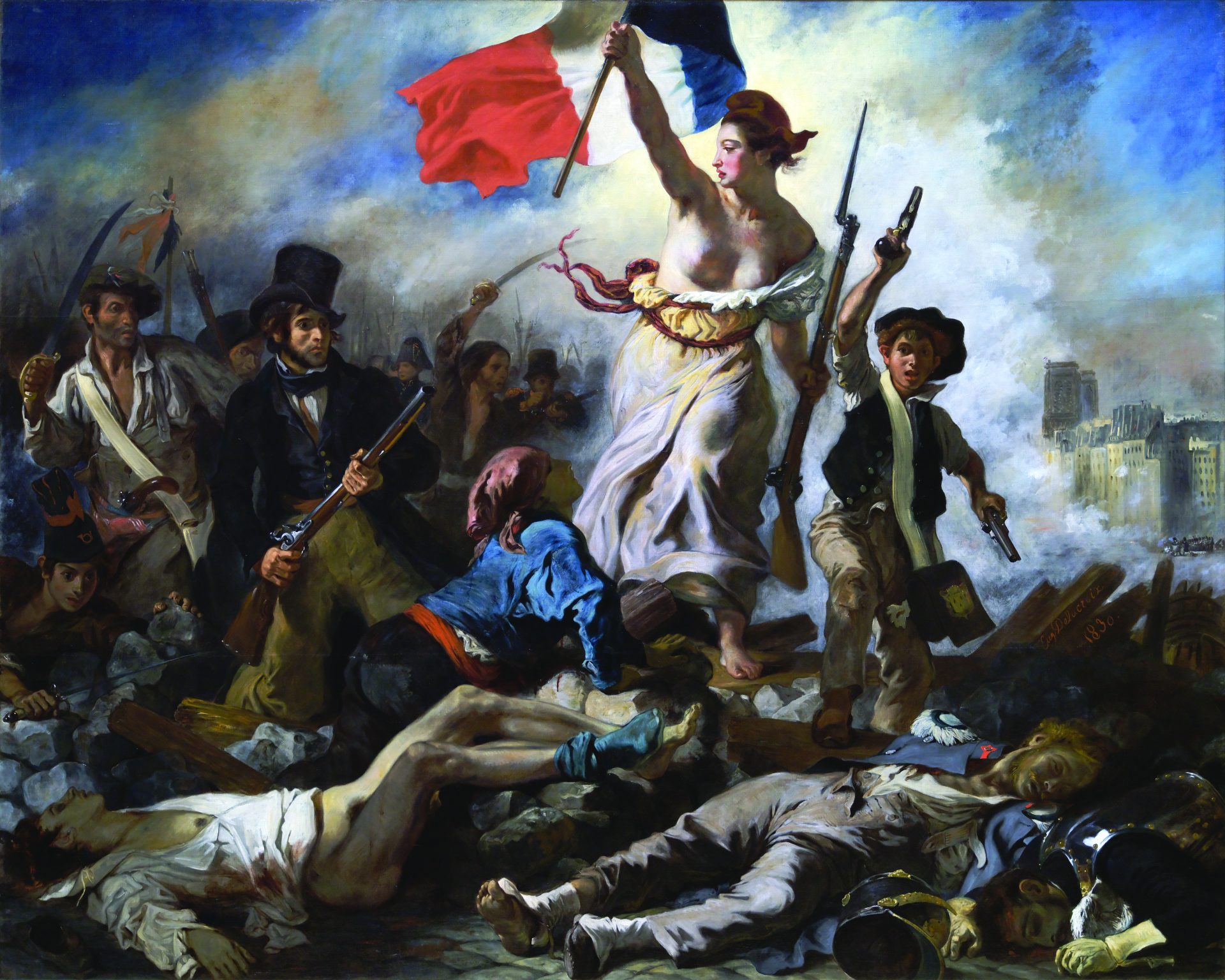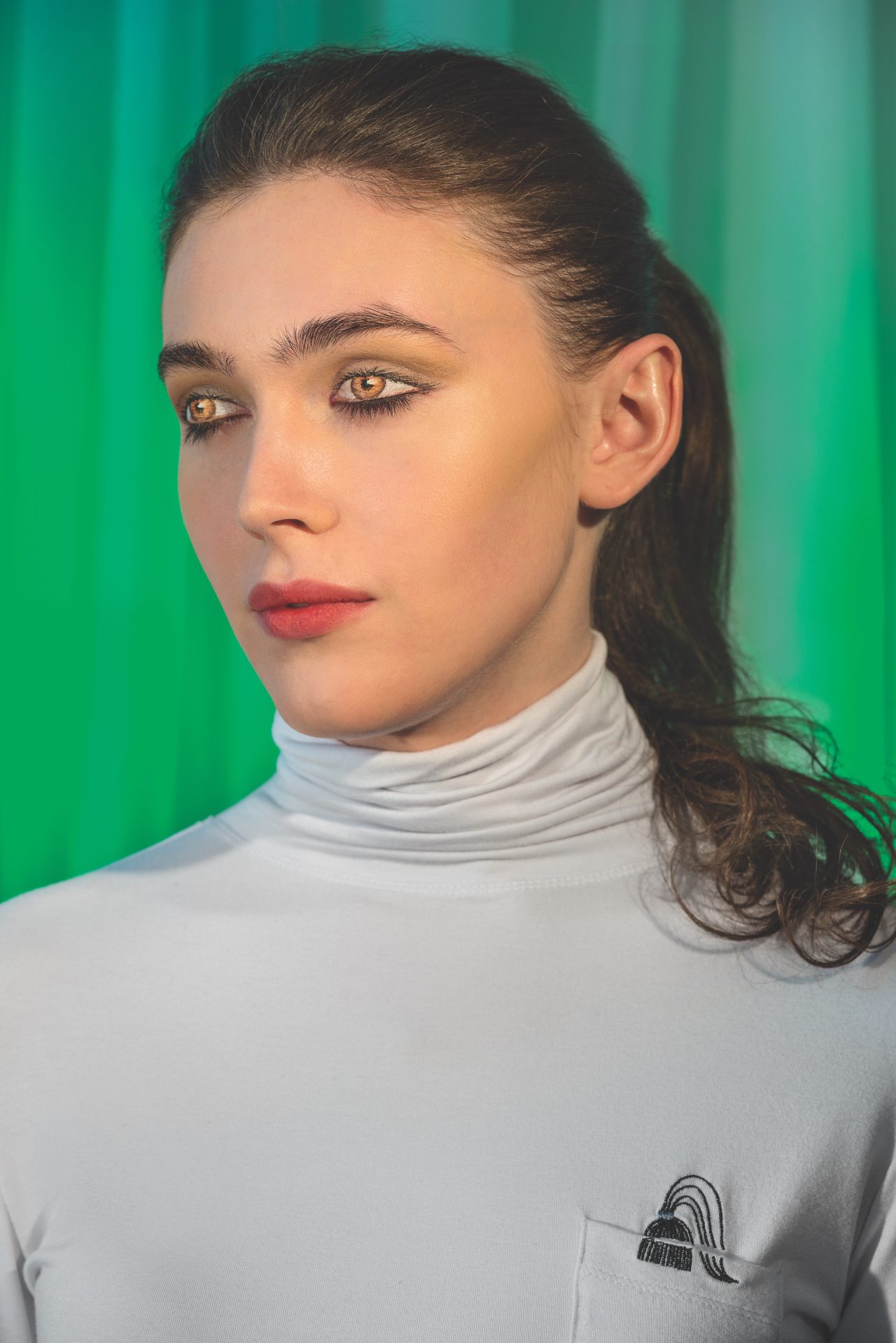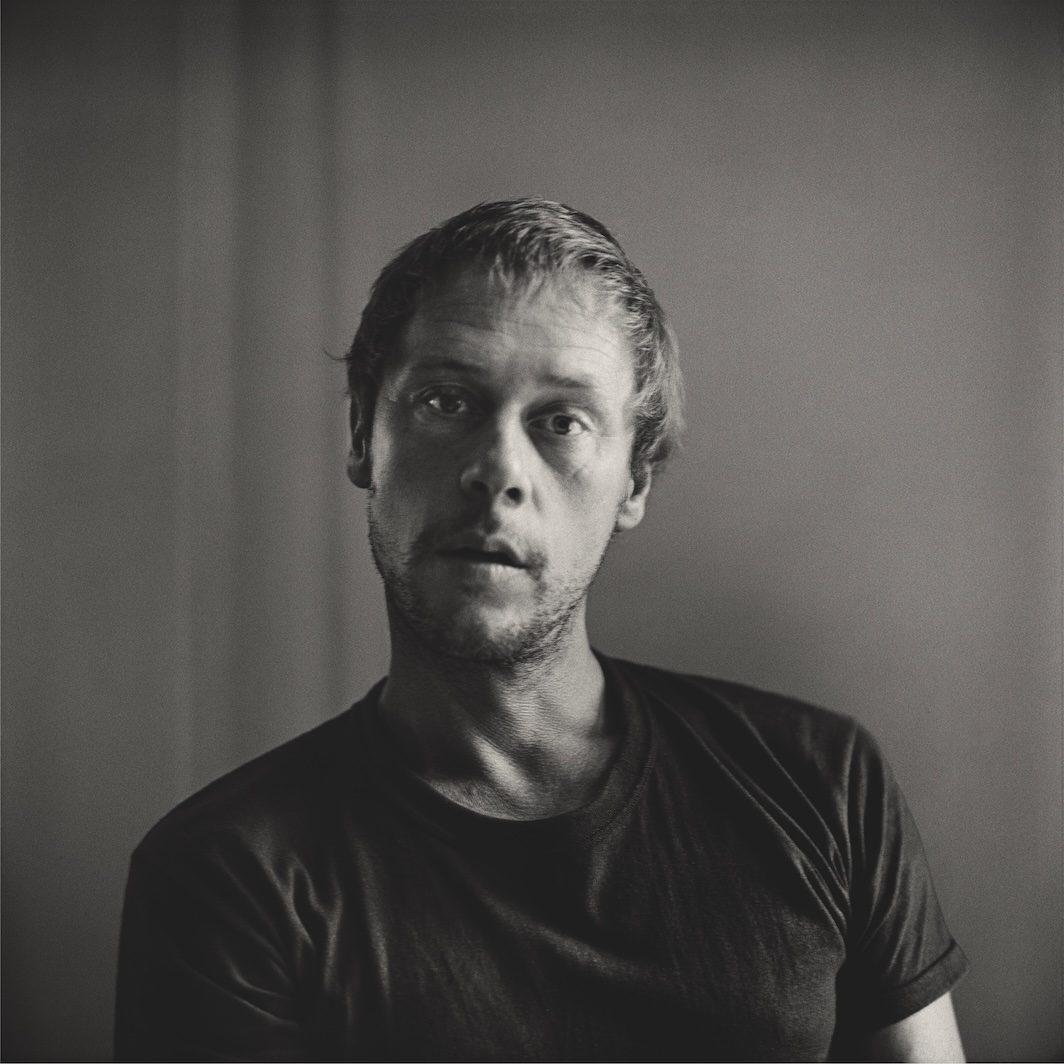
In the wake of the visionary (if a little scattershot) solo presentation of his series “Ten Commandments,” at Alfred Stieglitz’s 291 gallery in New York in 1912, Arthur Dove cemented his reputation as America’s foremost—purportedly even first—abstract artist. His intimately scaled watercolors, pastels, and oil paintings departed from observations of nature to enter a realm of pure expression, color, and light, filtered through the Cubist tint of dirt-road palettes. The priapic glide of his organic forms garnered praise for its “virility,” suggesting Dove’s phallic style as the visual counterpart to the petalled pudenda of Georgia O’Keeffe, who, along with John Marin, would join Dove in Stieglitz’s inner circle. If Dove’s work isn’t better known now, it might be due to what William C. Agee called “his habit of removing himself from the center of things.” The triumph of that first show was followed by a decade-long retreat to his farm in Westport, Connecticut. Later, illness and family affairs would continue to sideline the painter, whose death in 1946 coincided with the dawn of Abstract Expressionism. In 1952, the taste-making founding director of the Museum of Modern Art (New York), Alfred Barr—who, incidentally, neglected to stage a solo exhibition of Dove’s work—admitted that “he should be honored not only for the quality of his lonely art but for his importance as a precursor of the strongest current in mid-century American painting.” It was only decades later, in 1984, that Ann Lee Morgan would publish the artist’s first catalogue raisonné. Glaringly, the attempt to help bolster awareness of one of America’s pioneering colorists was printed largely in black and white.
In ARTHUR DOVE: A CATALOGUE RAISONNÉ OF PAINTINGS AND THINGS (Arthur Dove Catalogue Raisonné Project/Yale University Press, $125), curator Debra Bricker Balken builds on Morgan’s research to present an expanded view of “one of America’s most far-reaching, idiosyncratic artists.” Despite its titular focus on canvases and the artist’s “things”—Dove’s pet term for his curious multimedia assemblages—the book follows the painter from his listless, Impressionist-lite landscapes of the French countryside to the bold, nature-inspired compositions that would confound his early critics. In addition to a chronology, exhibition history, and bibliography, the book features an introductory essay by Balken, “Dove among the Critics,” which charts the artist’s reception through the writers who championed or disparaged him, with an emphasis on Stieglitz’s role in both promoting and perhaps also inadvertently sabotaging Dove’s legacy. But the true revelation here lies in the full-color illustrations, which track the painter through his marvels and misfires alike. —KATE SUTTON

What happens when a museum displays works critical of the museum itself? This question gets mostly skirted by ANDREA BOWERS (DelMonico Books/MCA Chicago/Hammer Museum, $60), a companion to the artist’s forthcoming exhibitions at the Museum of Contemporary Art Chicago and the Hammer Museum (Los Angeles), which in 2017 displayed Bowers’s installation Hammer Projects. Since 2003, her practice has involved collaborating with activists and amplifying their messages by exhibiting documentary evidence of their efforts, including drawings, neon signage, and videos. For Hammer Projects, Bowers worked with the nonprofit Food & Water Watch to display, in the words of Lucía Sanromán, a contributor to this volume, “an infographic revealing global bank investment in the construction of the Dakota Access Pipeline, which not coincidentally also included major funders to the Hammer Museum itself.” No essays here, however, explore in depth what it meant for the Hammer to show this work or what the museum’s response was. Sanromán comes closest when she labels Bowers’s use of art institutions to promote causes she believes in—feminism, environmentalism, reproductive justice, trans rights, the rights of the undocumented—as “institutional hacking.” As Bowers put it, “One of the things I thought about was that if I could get some attention for my work but it was not ‘art about art’ but about real people and activists, the subject matter could be institutionalized.”
In a way, Bowers’s work hacks this book: pieces such as “Make My Story Count, Letters to Planned Parenthood,” 2011, allow her marginalized subjects to tell their stories directly. One account begins, “At the age of sixteen I was raped and no one believed me.” In stills from Bowers’s 2003 video Vieja Gloria, tree-sitters protect an ancient oak; a 2014 piece tells the story of the 2012 Steubenville rape case through text messages. Bowers, who is based in Los Angeles, was trained in the early 1990s at CalArts in a Conceptualism that stressed both intellectualism and dematerialization; she embraces the first but rejects the second, becoming a feminist Conceptual artist whose laboriously crafted work becomes, in Sanromán’s words, “an art commodity, a piece of political propaganda, and a form of public history.” Let’s hope the museums that exhibit Bowers’s work grapple with its incriminations instead of simply co-opting her message. —FRAN BIGMAN

The lesbian, feminist, Jewish painter Louise Fishman has spent her sixty-plus-year career developing “a language appropriate to being separate.” A lavishly illustrated collection of both new and republished essays, LOUISE FISHMAN (Karma, $50), convincingly argues that her work challenges received ideas about the machismo of Abstract Expressionism and its incompatibility with Minimalism. Fishman’s paintings turn energetic, intuitive applications of mineral-colored paint—using brushes, spades, brooms, or her fingers—into gridded, modular forms, creating a combination of density and airiness, of negative space and built-up paint chipped away to expose underlying layers. Fishman, writes contributor Andrew Suggs, “rages within the rectangle.”
Fishman was born in Philadelphia in 1939 to an artist mother who became “furious” when her daughter showed talent. Finding most art schools too restrictive, Fishman attended a few before obtaining her MFA and moving to New York in the mid-1960s. The essays trace the development of her work, from its early plaid-like geometricism to a reactive period in the early 1970s, when Fishman was “wanting to get all the male stuff out of my painting” and, inspired by Eva Hesse’s use of unconventional materials, produced dark-toned paintings roughly cut up and recombined using the traditionally feminine craft of sewing. Her feminist work from this period also includes paintings scrawled with the names of “Angry” women: “Angry Louise,” “Angry Marilyn” (Monroe), “Angry Gertrude” (her mother). In the late ’70s, a time when painting was supposed to be dead, Fishman returned to her reinventions of Abstract Expressionism and Minimalism. Ballin’ the Jack, 2019, a six-by-seven-foot painting shown in November and December 2020 at a solo show at Karma, demonstrates the vigor of her current style: swaths of dark brown nearly drown out patches of turquoise and pink, forming both rectilinear and curved shapes.
In the last essay, Fishman describes her process: first, she performs “ritual events” like sweeping the floor, talking on the phone, and meditating. Then, she writes, “I try to take the painting by surprise.” —F. B.

Born in a Mississippi cabin in 1892, the son of former slaves, Elijah Pierce was a peerless wood carver, barber, and preacher. A mostly indifferent parishioner as a child, he found religion as a teenager, when he errantly picked up a Sears, Roebuck catalogue instead of the Bible. According to Pierce, God struck him dead. When he came to, he realized the error of his ways; a few years later, he got a preacher’s license. From the 1920s until his death in 1984, Pierce etched his faith in wood, using a pocketknife to craft elaborate biblical scenes adorned with glitter, paint, varnish, and, sometimes, rhinestones. Pierce made secular work, too, carving autobiographical scenes, political parables, and portraits of sports and music stars like Joe Louis and Lena Horne. ELIJAH PIERCE’S AMERICA (Barnes Foundation/Paul Holberton Publishing/The University of Chicago Press, $50), which accompanied a recent show at the foundation, surveys Pierce’s art, from the first, shy wooden elephant he made for his wife in 1923 to his monumental later pieces. His most ambitious work, The Book of Wood, 1932, is a series of seven scenes from the life of Christ carved, painted, and mounted on oversize pages, which he and his wife, Cornelia (a likely coauthor), toured with and displayed at holy gatherings. Pierce was earnest but never grave, and even his most harrowing scene of racial terror, Elijah Escapes the Mob, ca. 1950s, evinces the good-natured surety of a man on a higher plane. (God was undoubtedly on his side—one time, He even directed the artist to a cache of money to pay a debt.) In 1985, the Columbus Museum of Art bought the contents of Pierce’s barbershop—art, carving knives, clippers, and all—and added it to the permanent collection. Indeed, Pierce’s work in hair and wood are of a piece; as Theaster Gates writes, the artist was a genius of tactile precision: “For him, the pocketknife was a way of confronting the truths of materiality and the world in its purest state as he strove to create order through patient, sharp, and decisive movements.” Both trades, like preaching, also require storytelling skills. Pierce was up on everything—Watergate, horse racing, divine intervention—and couldn’t wait to tell us all about it. —DAVID O’NEILL

Since 2008, Sol LeWitt pilgrims have journeyed to MASS MOCA to marvel at the more than one hundred wall drawings executed per the artist’s instructions. LeWitt, who is an uneasy fit in any traditional art category, is best known for these Conceptualist, Minimalist works, object lessons in how simple elements combine to create voluptuous forms. An art-book editor would be forgiven for simply reproducing these brashly nerdy, eye-catching works—maybe with some of LeWitt’s three-dimensional “structures”—and calling it a day. But LOCATING SOL LEWITT (Yale University Press, $50) goes deeper, carefully reconsidering the artist through nine essays, copious illustrations, and some conspicuously heroic academic labor. Like a genial math teacher, LeWitt had an understated sense of humor that lightens the mood just when you’re starting to get bored: one drawing of a simple circle was produced by instructions that laboriously—in more than four hundred words of circuitous verbiage—point out their own absurdity. As curator Kelly Baum wrote in 2017, “No better proof of the interdependence of lucidity and mania exists than in the work of Sol LeWitt.” Locating Sol LeWitt revels in both the method and the madness. —D. O.






